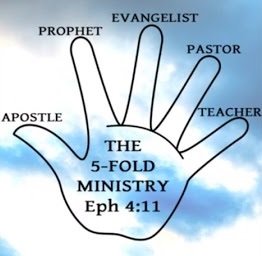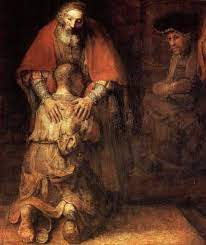The Fivefold Ministry
We have heard about the gifts of the Holy Spirit and spiritual gifts but have we heard of the gifts of Christ (also called “ascension gifts”, “fivefold gifts”), and did you know that these gifts were part of Christ’s finished work? Receiving this truth would enable us to move ourselves towards Christian maturity and the fulness of the stature of Christ.
An intriguing scripture portion in Ephesians 4 explains this. But grace was given to each one of us according to the measure of Christ’s gift. Therefore it says, “When he ascended on high he led a host of captives, and he gave gifts to men” (Eph 4:7,8). The background is of course that of a victorious king returning to the capital to great acclaim, with captives defeated in the battlefield in chains trailing behind him. In celebration, he shares the spoils of war with the city, even though they did not fight the battles and did not deserve any reward at all. Yet the king graciously and generously gives gifts to them. Paul however was describing how Christ gave gifts to the world, particularly the church, after he had victoriously defeated Satan, sin, and death by his death on the cross and resurrection from the tomb. These must be significant gifts for they came out of the sacrifice of his life. What are these gifts and what purpose do they serve?
The scripture goes on to explain what these gifts are: And he gave the apostles, the prophets, the evangelists, the shepherds and teachers, to equip the saints for the work of ministry, for building up the body of Christ, until we all attain to the unity of the faith and of the knowledge of the Son of God, to mature manhood, to the measure of the stature of the fullness of Christ (Eph4:11-13). These gifts are men and women with spiritual authority and various complementary gifts that can equip the church to do God’s will. These God-designed, holistic, complementary ministries, if welcomed in their fullness, and not partially, by the church, will bring about church effectiveness, growth, unity of faith and intimacy with God, maturity and the greater glory to God.
The gifts of Christ are sometimes called fivefold ministry or fivefold offices, or fourfold (combining pastors and teachers into one) ministry gifts of Christ. The five are gifted people who have received grace to be used by God to bless and build the church in dimensions that complement each other to maximum impact. We need all of them.
Apostles
The apostles (“sent out ones”) are those who establish churches among unreached peoples. They evangelise the lost, equip the saints, establish the church and the doctrines, set up and equip leadership and move on to new territories. Apostles love the church and have a passion for establishing and multiplying local churches.
Prophets
The prophets forth-tell and foretell. He forth-tells in the sense of receiving God’s “now” word for God’s people and faithfully declares the fresh rhema message to them, often calling them to turn from modern forms of idolatry to God himself. God may also grant them intimations of the future which they will deliver faithfully so the individual or church may take heed and prepare, or be encouraged, strengthened and comforted. In the last days, when the love of many will wane cold, this gift of Christ needs more recognition and acceptance. Prophets love the presence of God and are passionate about delivering the current word of the Lord to fire up the hearts of God’s people.
Evangelists
The evangelists spread everywhere the good news of Jesus Christ with convincing clarity and persuasive power to the lost. They are graced to move unsaved people to open their hearts to accept the truth of the good news of Jesus Christ. They love being with lost people and they are passionate preaching Christ and his salvation to them.
Pastors
Pastors are the shepherds (literal translation) of the church and their job is to feed the sheep, care, and watch for their souls. His number one task is to be a faithful example of faithful Christian living. He is the walking visual aid that inspires, encourages and comforts the congregation to be devoted and faithful to the Lord. He loves spending time with God’s people and is passionate about growing them in the love of God.
Teachers
Teachers love to inform, instruct, and explain the things of God using Scriptures. They love to make fundamental teachings of the Bible accessible, clear and applicable for God’s people, whatever their level of understanding. Faithfulness to the meaning of the text, and diligence to live out the truth are their bottom line. Teachers love spending time feeding on Scriptures and are passionate about communicating truth effectively.
Welcome Mat
The gifts of Christ are God’s gifted servants appointed to bring different nutrients to the body of Christ and together they impart a balanced, multi-faceted ministry the church needs for growth into the maturity and purity and beauty of the Bride of Christ, ready to be received by Christ the Bridegroom.
God is faithful and will provide these gifted people to the Body of Christ. It is for us to recognise who they are and roll out the welcome mat so the church can receive their complementary gifts with thanks, and grow in maturity.
This is the seventh in a twenty six series of A to Z of Christ’s Finished Work. Click HERE to access the earlier posts>




